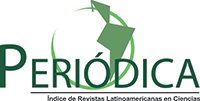Paleontología Mexicana
Volumen 9, núm. 2, 2020, p. iii – iv
PREFACE
Experiences and perspectives for the conservation of the paleontological heritage in Mexico – Part 2
Aguilar Arellano, Felisa J.a,*
a Instituto Nacional de Antropología e Historia. Centro INAH Coahuila and Presidencia del Consejo de Paleontología. Moneda 16, Col. Centro, Ciudad de México, 06060, México.
* felisa_aguilar@inah.gob.mx
1. Introduction
From the middle of the 20th century the paleontological heritage is at risk. Anthropic activities linked to economic development such as construction, industrialization, vandalism, the continuous collection of fossils by professionals and amateurs and commercial purposes are accelerating this heritage's destruction and disappearance (Lipps, 2009; Aguilar Arellano, 2020). Different strategies for the protection and conservation of paleontological remains and their localities have been developed to solve these problems. The association of scientific research and education, recreation and tourism are part of the search for solutions to these problems. Another essential aspect to consider is the existence of laws and the institutions responsible for them, including the paleontological heritage. However, the scientific community remains concerned about an irreparable loss of this evidence for future generations if we consider that there is still much to discover, describe, and make known.
The culture of the protection and conservation of fossils is necessary. To promote it, we consider making known the history that triggered the need for its preservation and the strategies that were carried out within the framework of the needs of the time. This second part of the special issue: "Experiences and perspectives for the conservation of paleontological heritage in Mexico," has three contributions that will give an overview of the background.
The fossil record of Mexico results from studies carried out by different researchers assigned to educational and research institutions, distributed throughout the national country. The first contribution of this special issue will recognize women’s role in developing paleontology in the country (Women in Mexican paleontology: a pioneer’s legacy). The second contribution made a synthesis in terms of the conventions and laws generated for the protection and conservation of fossils in Mexico and Latin America (How is the paleontological heritage of Mexico and other Latin American countries protected?). Finally, the third showed how and why the INAH created the Council of Paleontology (The Council of Paleontology of INAH: Background and perspectives).
The Council of Paleontology of INAH (ConPal) confirms its commitment to producing articles that show the research results, the discussion and exchange of experiences, and proposals to generate the regulations that allow the research, protection, conservation, and dissemination of paleontological heritage in Mexico (Aguilar Arellano, 2019).
Besides, the ConPal recognizes the inclusion of other social, cultural, and political actors related to paleontological heritage. The dialogues generated will allow us to understand the current normative and legal framework and clarify the doubts that its application produces since the preservation of paleontological heritage in Mexico will be the result of generating an acute public awareness and the establishment of reliable collaboration networks.
I thank my guest co-editor, Dr. Eduardo Corona Martínez, for his support during the articles' review process that makes up this special issue. I also thank Dr. Josep Anton Moreno Bedmar, editor-in-chief of Paleontología Mexicana, Sandra Ramos Amézquita M. Sci. chief of the Publications Department of Institute de Geology, editorial designer León Felipe Álvarez Sánchez M. Sci. and the technical editorial team of Paleontología Mexicana, for its acceptance to have a second part of the special issue: "Experiences and perspectives for the conservation of paleontological heritage in Mexico”.
References
Aguilar Arellano, F.J., 2019, Reactivación del Consejo de Paleontología, en Sánchez Nava, P.F. (coord.), La arqueología mexicana, a principios del siglo XXI: estudios de caso: México, Secretaría de Cultura, Instituto Nacional de Antropología e Historia, Publicación electrónica, s/p.
Aguilar Arellano, F.J., 2020, La protección del patrimonio paleontológico en México: Morelos, México, El Tlacuache, Suplemento Cultural del Centro INAH Morelos, 957, 1−8. available at: [https://www.inah.gob.mx/images/otros/20201031_tlacuache_957.pdf], consultado 11 diciembre 2020.
Lipps, J.H., 2009, PaleoParks: our paleontological heritage protected and conserved in the field worldwide: Carnét de Géologie / Notebooks on Geology, Book 2009/03, 1−10.
Enlaces refback
- No hay ningún enlace refback.
Paleontología Mexicana, Vol. 13, núm. 2, 30 de junio de 2024, es una publicación semestral (enero y julio) editada por la Unidad Editorial del Instituto de Geología de la Universidad Nacional Autónoma de México, Ciudad Universitaria, Delegación Coyoacán, C.P. 04510, México, CDMX. El editor en jefe es el Dr. Josep Anton Moreno Bedmar, CE josepamb@geologia.unam.mx y la editora técnica es la Mtra. Sandra Ramos, sandraram@geologia.unam.mx. Reserva de derechos al uso exclusivo No. 04-2022-072810185500-102, ISSN (revista impresa): 0185-478X, e-ISSN (versión electrónica): 2007-5189, ISSN-L: 0543-7652. http://www.ojs-igl.unam.mx/index.php/Paleontologia/index. https://twitter.com/paleontologiam Fecha de la última modificación, 15 de junio de 2023.
Las ideas aquí expresadas por los autores no necesariamente reflejan la postura del editor de la publicación Paleontología Mexicana. Se autoriza la reproducción total o parcial de los textos aquí publicados siempre y cuando se cite la fuente completa o la dirección electrónica de la publicación.


